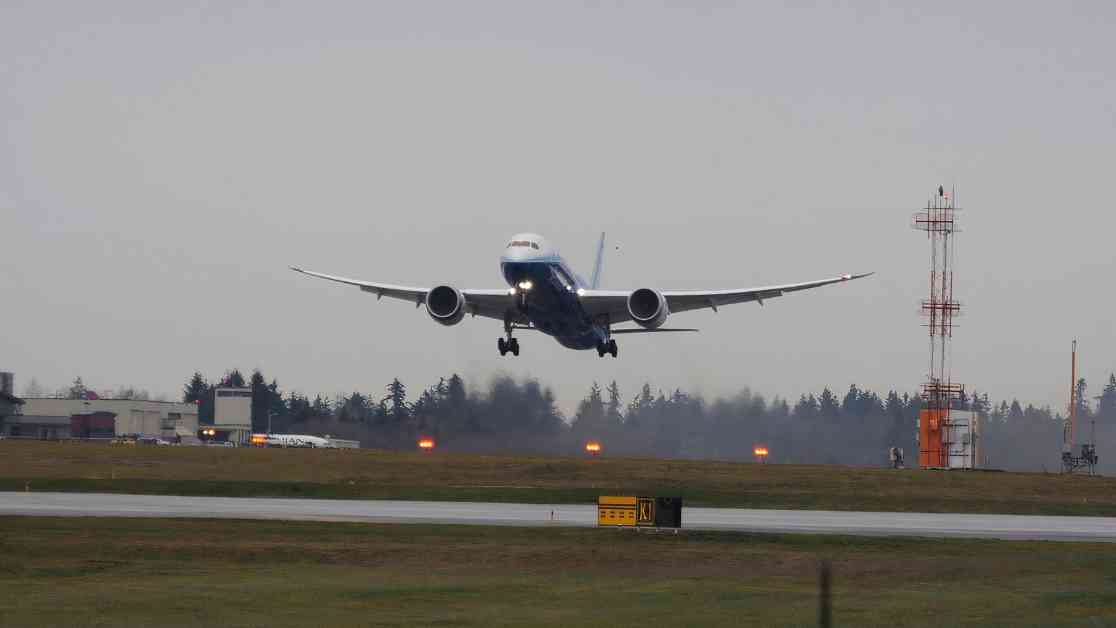Title: The Impact of Newer Aircraft on Global Warming: Understanding the Environmental Consequences
With the advancement of technology and innovation in the aviation industry, newer aircraft have raised concerns about their impact on global warming. Contrails, the visible lines of condensed water vapor left behind by aircraft engines, have come under scrutiny for their potential to contribute to climate change. Recent research suggests that these modern planes may be causing more global warming than previously thought, highlighting the need for increased awareness and potential solutions to mitigate their environmental effects.
How Contrails Contribute to Global Warming
Contrails, short for condensation trails, are formed when water vapor from aircraft exhaust freezes into ice crystals at high altitudes. These ice particles create long-lasting clouds that can trap heat in the atmosphere, contributing to the greenhouse effect and global warming. Studies have shown that modern commercial aircraft and private jets, such as the Boeing 787 Dreamliner and Airbus A350, produce contrails that persist for longer periods compared to older aircraft models.
Soot particles emitted by jet engines at high altitudes play a significant role in the formation and longevity of contrails. These particles freeze in the cold temperatures of the upper atmosphere, seeding ice crystals that extend the life of contrails and enhance their warming effects. The unique conditions at cruising altitudes of 30,000 to 40,000 feet allow soot particles to interact with atmospheric moisture, leading to the creation of contrails that can spread across the sky and contribute to climate change.
The Challenge of Studying Contrails
Understanding the impact of contrails on global warming presents a complex challenge for researchers. Dr. Edward Gryspeerdt and his team at The Grantham Institute for Climate Change at Imperial College London have conducted extensive studies to analyze the behavior of contrails produced by different types of aircraft. By using flight data and satellite observations, they have identified patterns that suggest modern planes with higher cruising altitudes tend to generate contrails that last longer and have a greater warming effect on the atmosphere.
Not all soot particles from aircraft engines convert into ice crystals, but the research indicates that more particles seed ice formation at higher altitudes. This phenomenon prolongs the life of contrails, especially in regions where the air is warmer, allowing smaller ice particles to remain suspended in the atmosphere. As a result, the warming effects of contrails can persist over extended periods, impacting the climate in ways that warrant further investigation and mitigation strategies.
Understanding Contrail Cirrus and Climate Effects
Contrail cirrus, a term used to describe the spread and persistence of contrails in ice-supersaturated regions of the atmosphere, poses additional challenges in assessing their climate effects. These persistent contrail clouds can cover large areas of the sky, particularly in regions with high air traffic like Europe and the US east coast. The formation of contrail cirrus contributes to anthropogenic radiative forcing, a measure of the impact of human activities on the Earth’s energy balance through the trapping of heat in the atmosphere.
Research indicates that contrail cirrus may be the largest contributor to annual mean radiative forcing due to aviation, underscoring the importance of addressing the environmental consequences of contrails. As policymakers and industry stakeholders work towards achieving net-zero emissions by 2050, there is a growing need for innovative solutions to reduce contrail pollution and minimize the warming effects of aircraft emissions on the climate.
Potential Solutions and Future Research Directions
As the aviation industry grapples with the environmental challenges posed by contrails and their impact on global warming, researchers and policymakers are exploring potential solutions to mitigate these effects. Developing specific flight routes that avoid regions prone to contrail formation could help reduce the overall warming caused by aircraft emissions. By predicting contrail-forming areas in the atmosphere and rerouting flights accordingly, airlines could potentially minimize their environmental footprint and contribute to sustainable aviation practices.
Investing in increased research and data collection on contrails and their climate effects is essential to inform evidence-based decision-making and drive innovation in the aviation sector. Collaborative efforts between scientists, industry experts, and policymakers are crucial to developing effective strategies for reducing contrail pollution and addressing the environmental consequences of aircraft emissions. By prioritizing sustainability and environmental stewardship, the aviation industry can work towards a greener future that balances technological progress with ecological responsibility.
In Conclusion
The impact of newer aircraft on global warming through the formation of contrails highlights the complex relationship between aviation and climate change. As the industry strives to achieve net-zero emissions and reduce its environmental footprint, understanding the effects of contrails on the atmosphere is crucial for developing sustainable practices and mitigating climate change. By investing in research, innovation, and collaboration, stakeholders in the aviation sector can work towards a more environmentally conscious future that prioritizes the health of our planet and the well-being of future generations.













